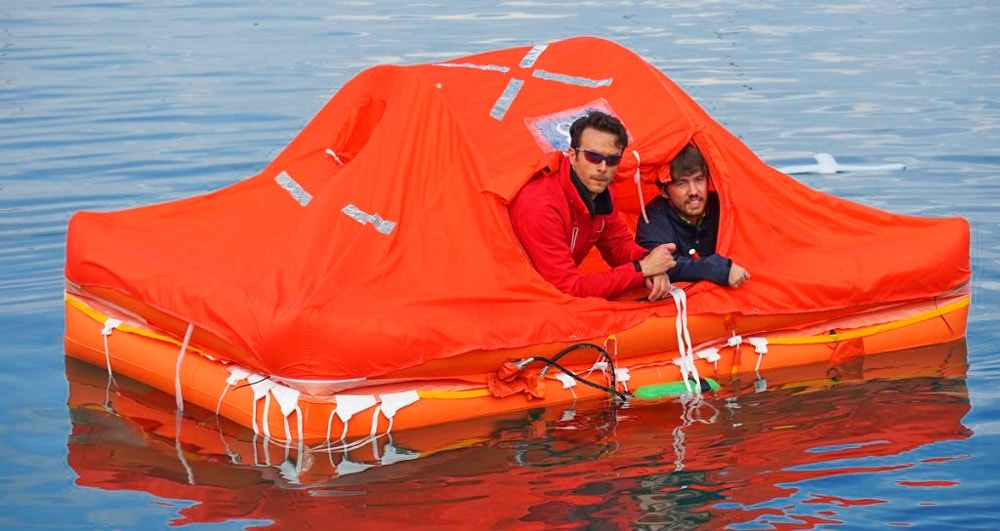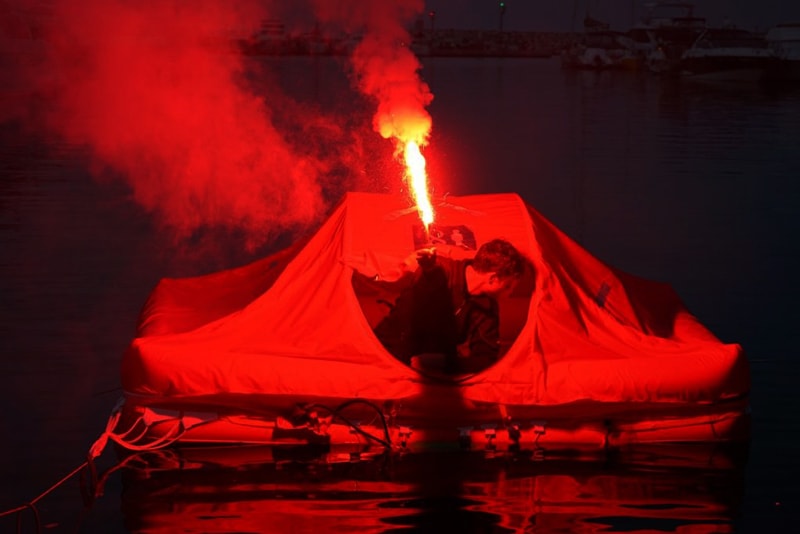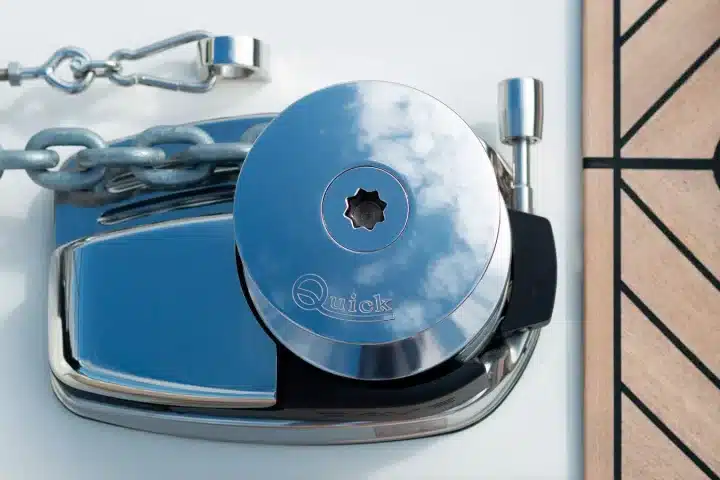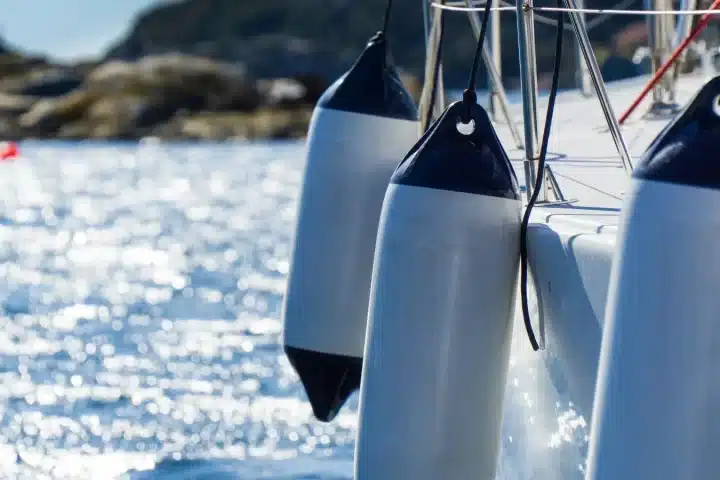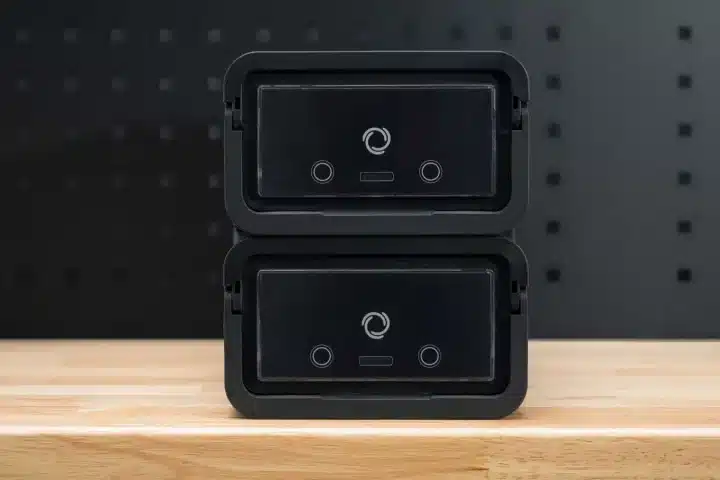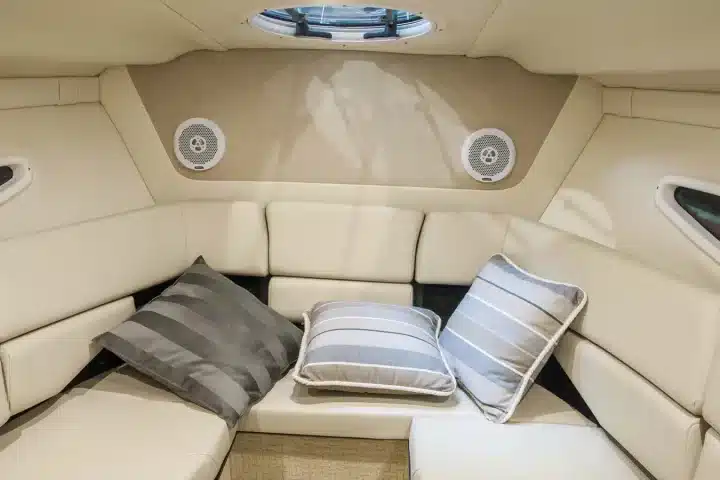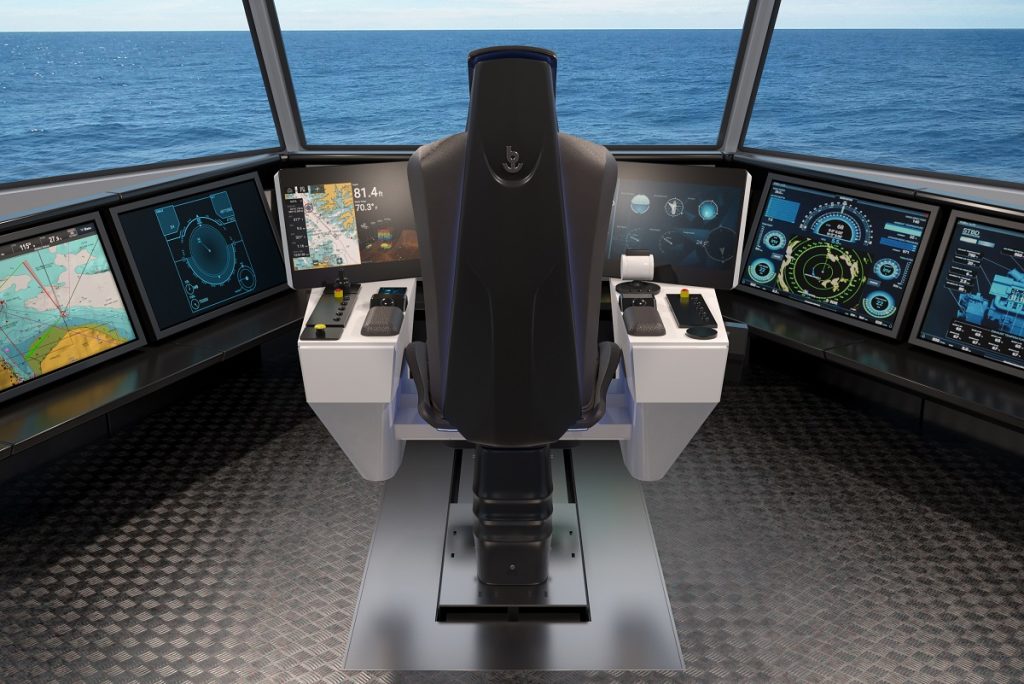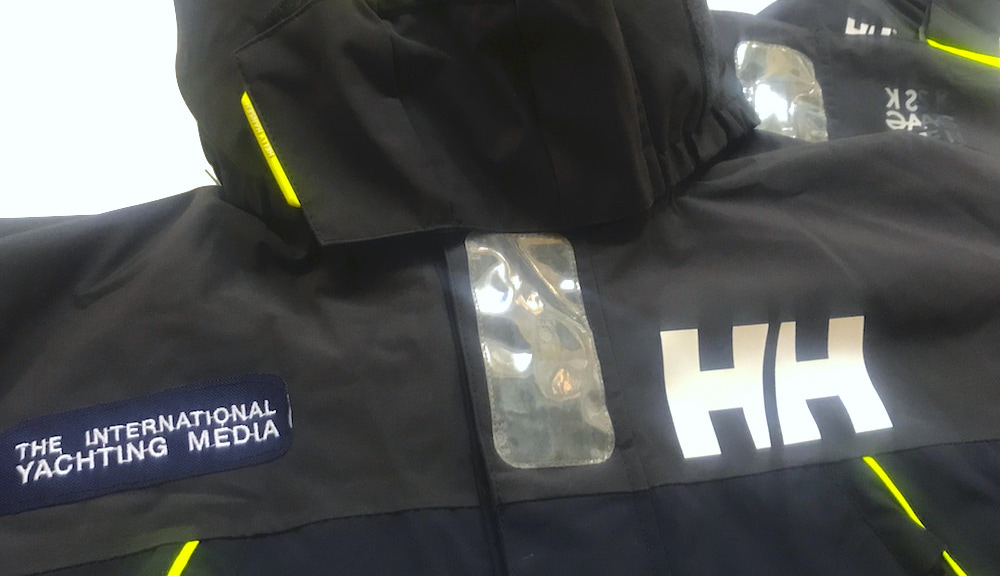Life raft: 20 hours on board
Life raft is an essential part of boat equipment, even if we all hope we never have to use it. But how’s life inside? How can we make the most of the basic equipment provided by manufacturers? Are things easy even for someone that has never used it? In order to answer this and other questions and, above all, to test the real reliability of the product, the staff of Boatandboats has organized a test on board a life raft supplied by Arimar. The background was the Marina di Varazze; the crew was made of myself and Alberto Giachello.
The main goal of the event was to increase boat owner’s awareness about boat safety equipment. The choice of the location wasn’t random because it allowed boat owners to attend the test from the dock or even from the comfort of their sofa, thanks to Boatandboats’ Facebook page.
The life raft
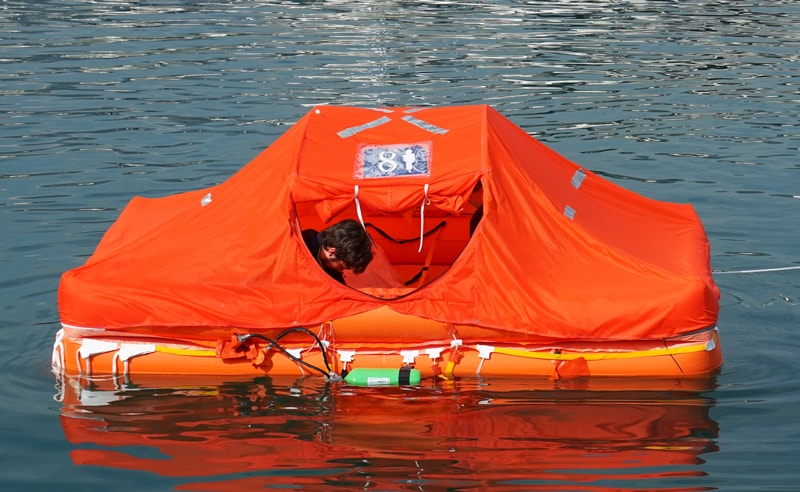
Inside the life raft, there is all the essential equipment to survive and be found from rescuers: a buoyant anchor with a 30-metre rope, a buoyant life ring (with floating rope) to be launched to the rescue boat, two paddles and a knife consistent with safety standards.
The life raft also 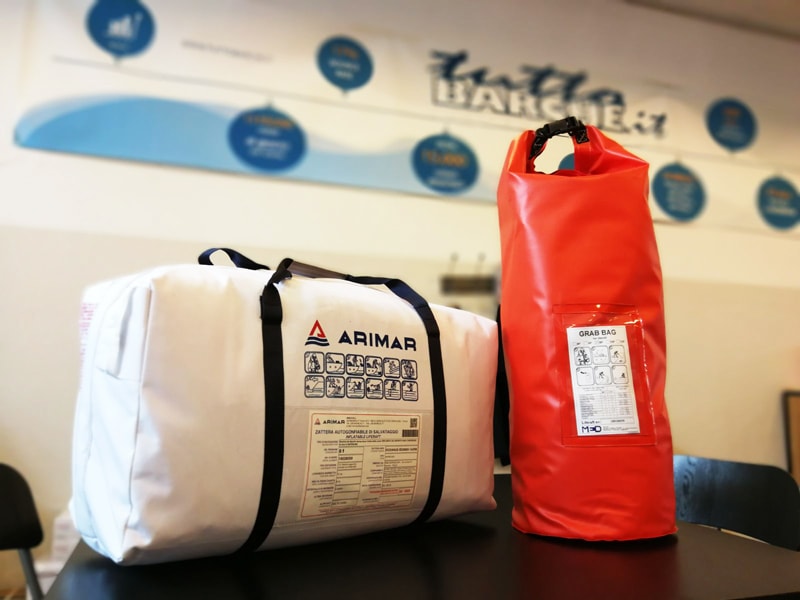
The kit also includes half a liter of drinking water and 10,000 kJ of food (about 2,500 kCal) for each passenger on board. Castaways unaccustomed to sea can find comfort in the twelve seasickness bags and six anti-seasickness pills. A waterproof torch with batteries, a spare light and a heliograph complete the kit.
The Grab Bag (waterproof, of course) contains additional food rations and water, another parachute flare, two buoyant smoke signals, a hand flare, a fishing kit, a first aid kit and two thermal blankets.
The test
A warm spring day, with just few clouds and a little wind, framed the first phase of our test. Last Saturday 28 april at 16:00, from the RIB which served as our support vessel, we launched the bag containing the life raft into the sea, in the area located just in front of the central quay of the Marina di Varazze.
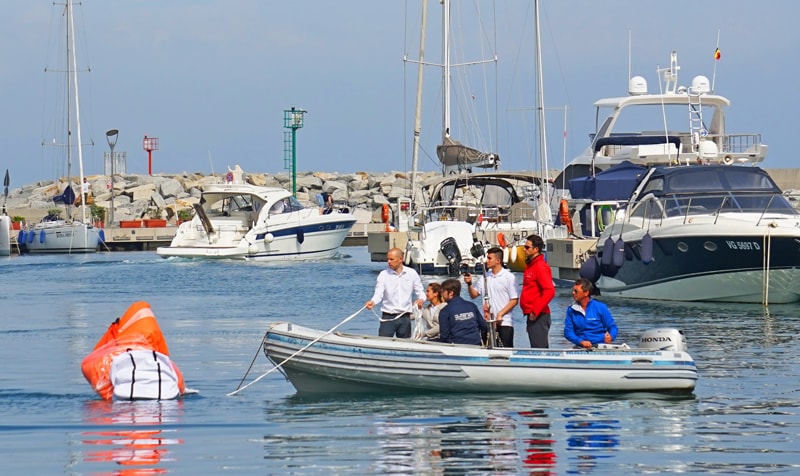
So, we had to perform the expected procedure in this case and, therefore, we had to grab the internal ladder, pull it back towards us and flip it.
At that point, everything was ready for our test: so, after taking deep breath, we jumped from the RIB towards our castaway day.
Our first “mission” was to approach ourselves to the jetty, 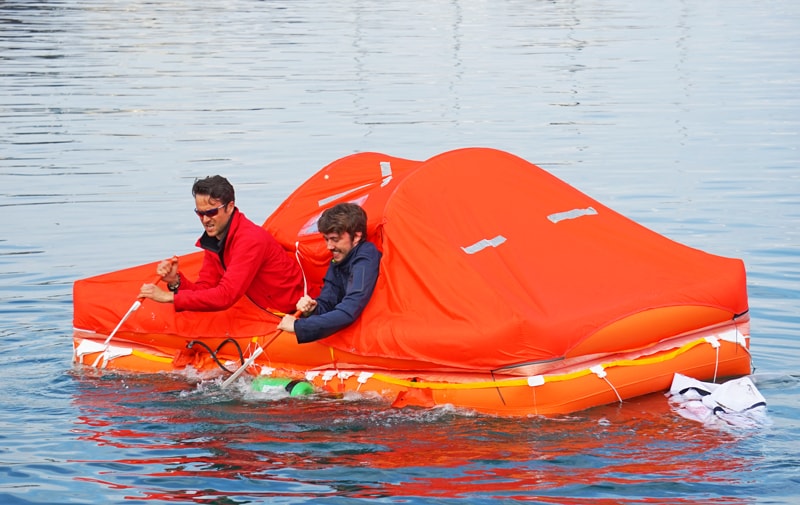
Before approaching to the the jetty, our support-RIB sailed around us to simulate waves. Our life raft was perfectly balanced, which allowed us to row from the side opening with no risk of falling overboard.
Finally, we carried out all the steps shown in the manual to close the caps of the two over-pressure valves. In this phase, we benefited from the help of Matteo Cantagalli, the Arimar test supervisor.
In our c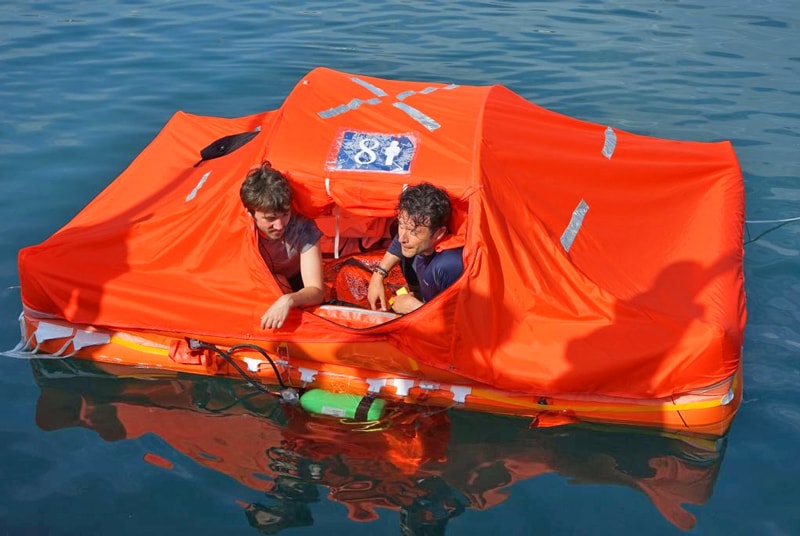
Since we were within a marina, we gave back the standard buoyant anchor which, together with the pockets positioned on the bottom of the life raft, guarantees greater stability. Finally, we completed our mooring maneuver fixing the life ring and its line to the jetty.
After completing this step, we noted two unpleasant surprises: a considerable amount of water had entered our life raft – partly because of the initial overturning, partly because of our agitated paddle strokes – and the cloth fixed on the life raft floor had got unhooked.
The first thing to do was to remove water on board. With the knife tied 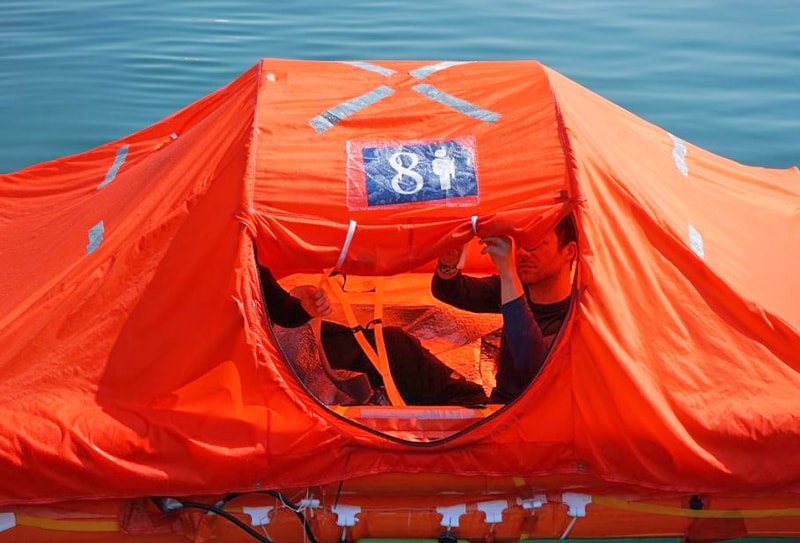
In retrospect, we realize that it would be more useful to empty the life raft by sitting on the tubes and collecting water at our feet, which created a climb on the surface. Maybe we would have got wet anyway but not so much. But the fact remains that our clothes were drenched both because of our cleaning operations and our previous paddle strokes.
We solved the problem temporarily by punching a hole in the cloth edges with the knife before fixing it again to the four corners of the life raft with the help of our ropes. It was not a definitive solution but it was enough to solve the problem temporarily.
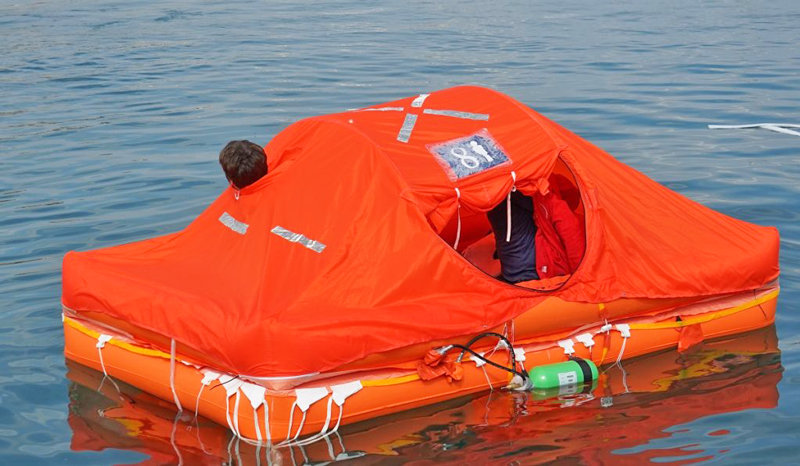
Inside, the life raft was comfortable and, in late afternoon, the temperature was perfect. After a short inspection of our equipment, we prepared for our dinner time. Being within a port, we didn’t suffer waves and we therefore had the possibility to relax for a while, lying down on the bottom with our heads on the tube.
Time had passed very quickly and sunset time was approaching. So, we prepared for the night and we took our emergency flares. Of course, neither the parachute flare nor the smoke lights could not be used in the marina but we tested the three hand flares included in the standard equipment.
They all worked very well and we found it forward-looking to show instructions on each of them because this prevents any inexperienced castaway from burning himself.
Dinner time finally arrived. We opened the Grab Bag containing the survival food kit. Our meal consisted of a protein bar which tasted like a sort of concentrated cookie daugh. Of course, it was not like having a dinner at Cracco’s but, when you’re hungry, even a bar seems to be a cheeseburger. And the comparison is not random since they have the same caloric value.
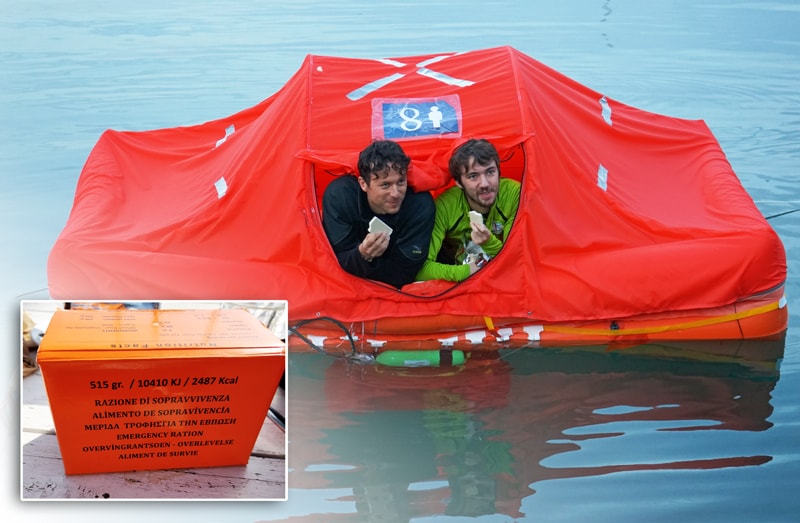
After dinner, we made a toast with the water bags included in the standard supply. Every bag, which corresponds to a daily ration per person, contains 125 ml of water. Our long day made us very thirsty, so we drank one each very quickly and, despite our initial skepticism, we realized that it tasted exactly like natural water.
Night was approaching and, with it, we prepared to face our biggest enemy: moisture. Inside the life raft, once the side opening was closed and the porthole secured to the specific rope, it was not cold and, even if our clothes were not perfectly dry yet, we felt good.
At that point, we took care of what had arisen our spectators’ curiosity. Indicatively, every three pedestrians in the Marina di Varazze who, in the afternoon, had stopped to ask us what we were doing on board the life raft, one had asked us how we would have done our bodily “business”. Well, the solution that Alberto and I found exploited the fortunate coincidence that, in order to allow us to put out our hand flares, we had been given a bucket.
Docked just a few meters from the a crowded quay, we could not do our “business” directly in the sea, so we used the bucket. Another option could be the bailer, which was smaller yet equally good to fulfill this potential function.
When night fell, we found the night light of the life raft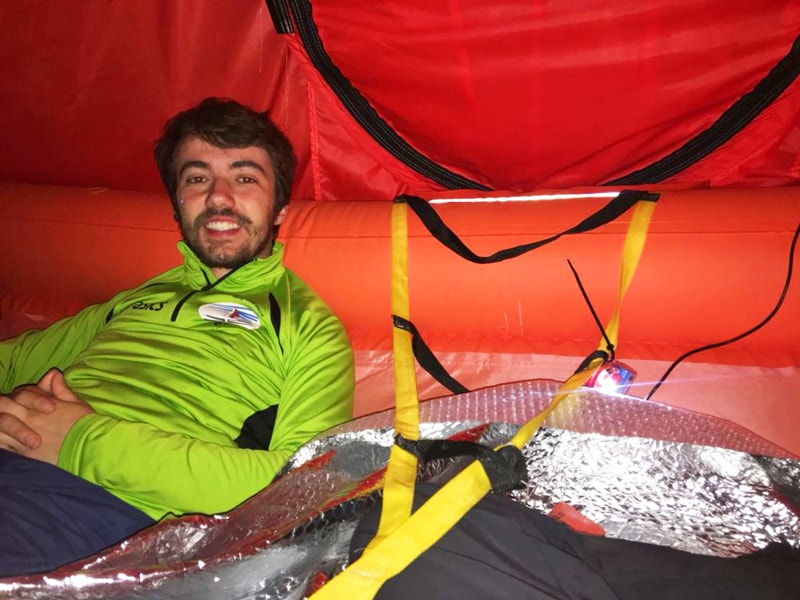
As mentioned above, the biggest enemy was moisture. Alberto and I found shelter in the thermal blankets that, I must confess, proved to be really efficient. Unfortunately, we made the mistake of using them with too many clothes on ( in addition, our clothes were still wet). Within a few hours, these conditions lead to condensation both in the life raft and inside the thermal blankets: moisture was through the roof.
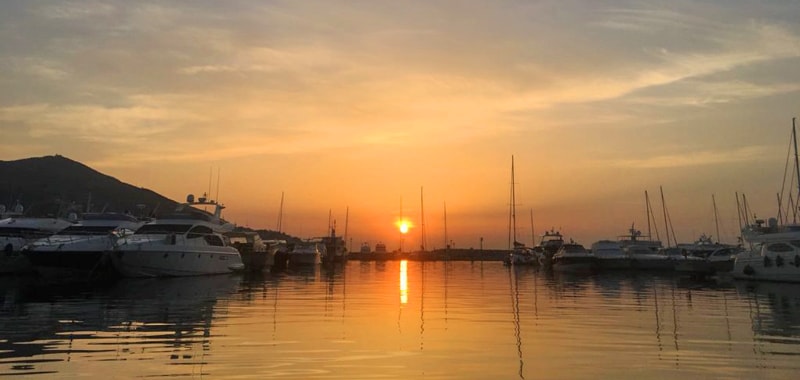
The cold suffered in the two hours before the dawn was certainly the hardest part of an unforgettable yet positive experience. When the sun finally came up, we were both very tired but we knew that the most challenging phase of our 20-hour test had just finished. Not even the drops falling from the life raft roof ( because of night moisture) upset our early-morning calm.
If we had been more clear-headed, we would have maybe understood that it would be sufficient to dry the roof with our sponges and bailer. But we were maybe too busy admiring the dawn in the Ligurian sky that, from the quay of the Marina di Varazze, welcomed the beginning of a new day and the last hours of our castaway experience.
With the return of the sun, we re-opened both the porthole and the side opening, letting the fresh air of the morning coming in and lower the heat, amplified by the tent.
The end of our adventure was close and the only one danger was represented by a sudden “artificial rain” shot by a hydrant from the dock: was that supposed to simulate sudden storms?
At about 9:00, we noted that the life raft’s tubes had deflated a little, probably because of heat. Following the manual’s instructions and the indications printed on the valves, we inflated the tubes with the standard pump. A little complex at first, the operation was successfully carried out at the end.
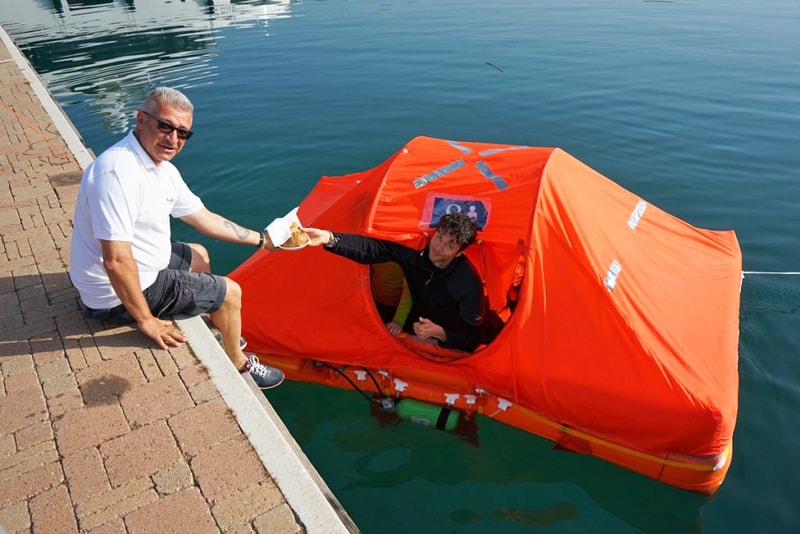
Alberto and I passed the last hours chatting with each other and performing the last operations before going back to the mainland.
When we approached and finally got the quay, I realized how exciting my experience had been. I had just lived a real “castaway” day, where hunger, weather conditions, wet clothes and little experience had been my worst enemies.
The Arimar life raft proved to be capable of excellent work, pro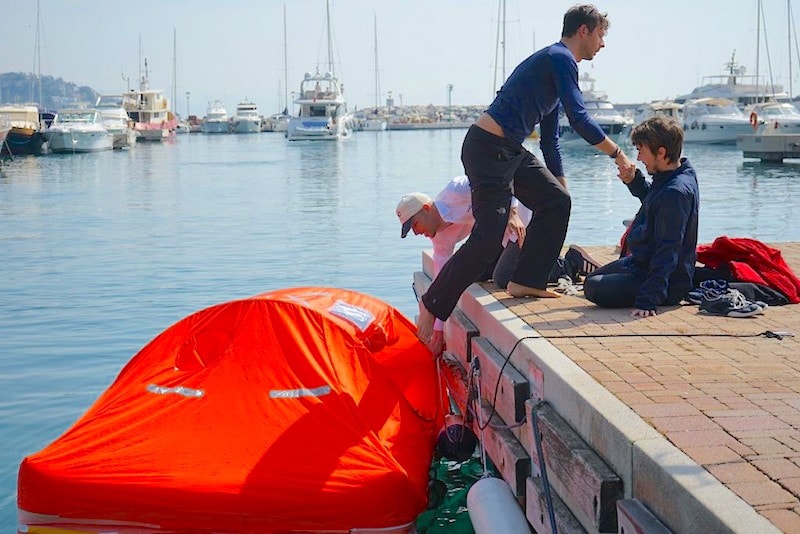
Last and not least, it’s inexperienced-proof and this is the quality I have appreciated the most since it was the first time I had climbed on board a life raft. All maneuvers are simple to perform and the most demanding steps are clearly illustrated by both manual and tools’ instructions. Maybe some of these indications are unnecessary for highly experienced sailors but, since this life raft is designed for everyone, I personally find it useful to repeat instructions.
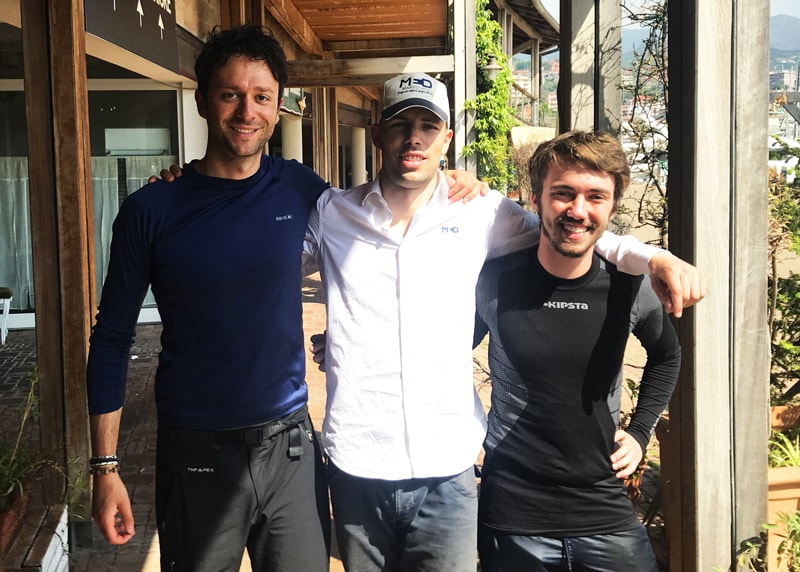
This experience will certainly remain engraved in my memory, with all its emotions I cannot list or express right now. The emotion of the moment when we entered the life raft, the excitement of our paddle strokes when approaching to the quay, the melancholy oblivion of cradling waves, the satisfaction and the sensation we could handle it, even mentally, after having overcome the difficulties (certainly less serious than those experienced by a real castaway) of our adventure, the moisture creeping into our bones, our cells, our marrow, the complicity of a stranger created in a such extraordinary situation, the magic of the dawn after a sleepless night, the tiredness and the incredulous torpor of the return to our ordinary life…
An almost Joycean list of memories, sensations, impressions which overlap and will remain for ever in my heart.
